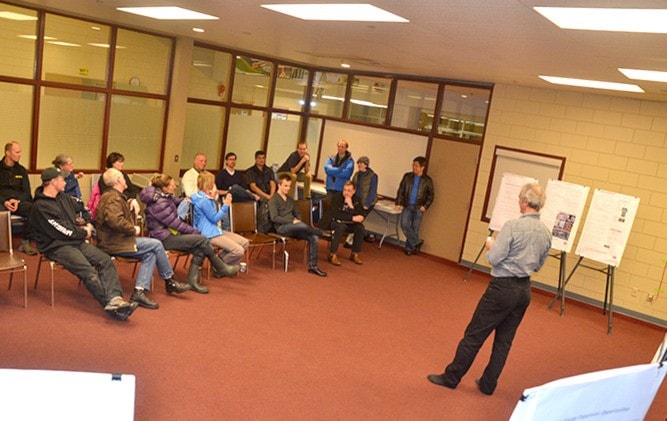The City of Revelstoke planning department is looking to update its sign bylaw following complaints the approval process is slow, confusing, overly-bureaucratic and maddening for new business owners.
On Jan. 31, the department unveiled its review process at a public open house.
The city proposes to streamline and simplify the approval process by establishing clearer guidelines and paperwork, including “one-page” guidelines for each kind of sign and a simplified sign checklist.
The review, prompted by complaints from business owners and by lobbying from the Revelstoke Chamber of Commerce, also contains several new signage rules – many of them more restrictive than the current bylaw.
New or revised proposed rules include:
-a ban on billboards in city limits.
-new rules restricting what’s allowed on existing billboards.
-revised guidelines for allowable fascia sign sizes.
-a new rule stating under-awning signs must be two-sided.
-a reduction in maximum sign heights in the city.
-a reduction in the allowable area of window signage.
-new restrictions stating posters and signs advertising community events can only cover 10 per cent of total window area.
-a rule saying sandwich boards may be maximum of two-feet wide and four feet high. Sandwich boards can be 50 per cent chalkboard or paintboard.
***
The Jan. 31 open house turned into a town hall meeting, where planning department staff heard two main veins of complaint.
The first was that the sign approval process was a Kafkaesque odyssey rife with unanticipated bureaucratic delays, unclear, odious paperwork and complicated, costly multi-step processes.
A local sign manufacturer noted one of his clients had sent him back to the drawing board several times for a large metal sign at great expense.
A real estate agent said the city process to approve his canopy sign had superfluous steps; once he submitted his design, the city asked for a fabric sample of the basic flat-black material and an engineering report for the small canopy. He said the manufacturers were surprised: “’We’ve never done one in our lives and we’ve done thousands of signs,’” was their response.
City planning director John Guenther defended the process, saying many business owners had smooth processes and could even access funding through the city for a sign design consultant. He encouraged business owners to come speak with the planning department at the outset.
The second area of criticism focused on the rules themselves. There was a spectrum of opinion. Some advocated laissez-faire policies; business owners should be able to do whatever they want. Others noted the existing policies favoured a heritage look that may not be appropriate for each business (although this point was disputed by planning staff).
Most agreed that rules were necessary, but argued they lacked the flexibility required to suit individual businesses’ needs. Others more or less favoured the status quo – if the rules and process were clearer.
The city’s planning department is seeking public input on the review by Feb. 15, and is targeting mid-March for completion.
